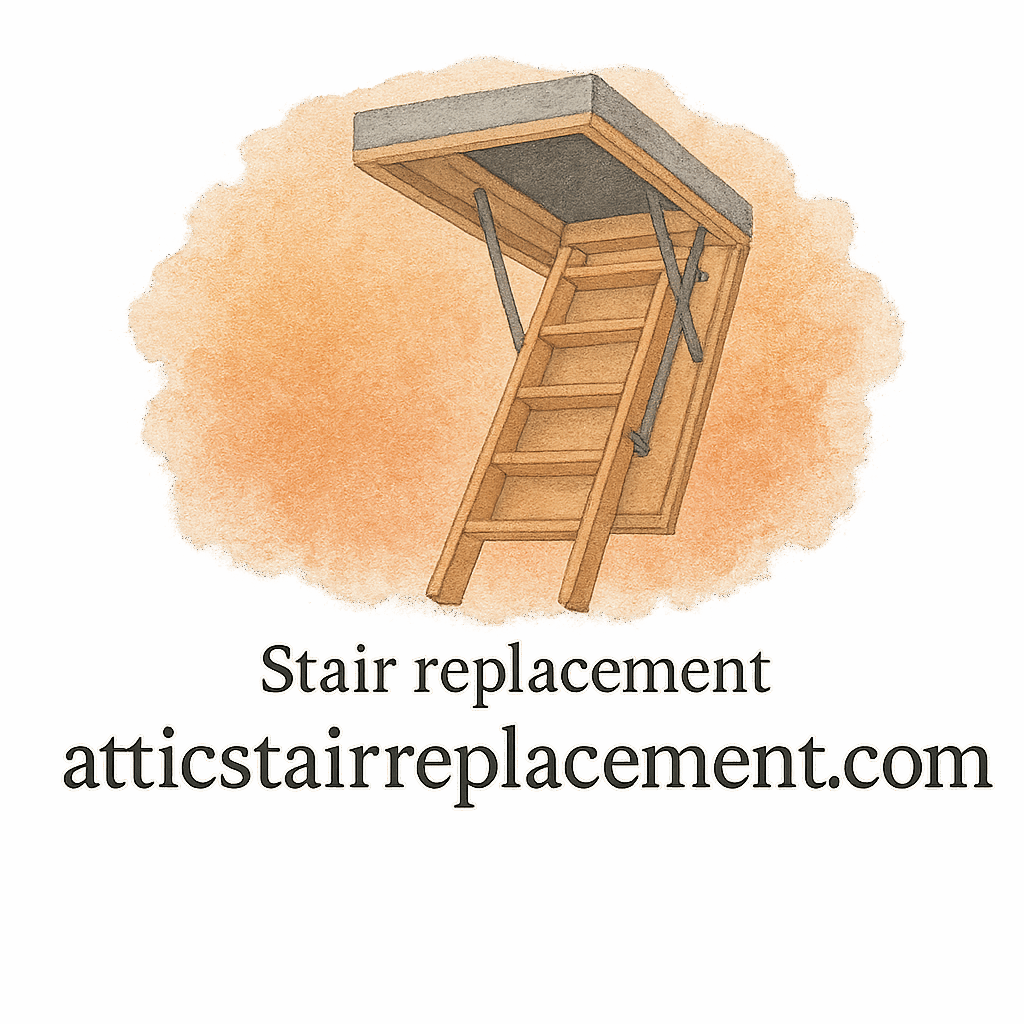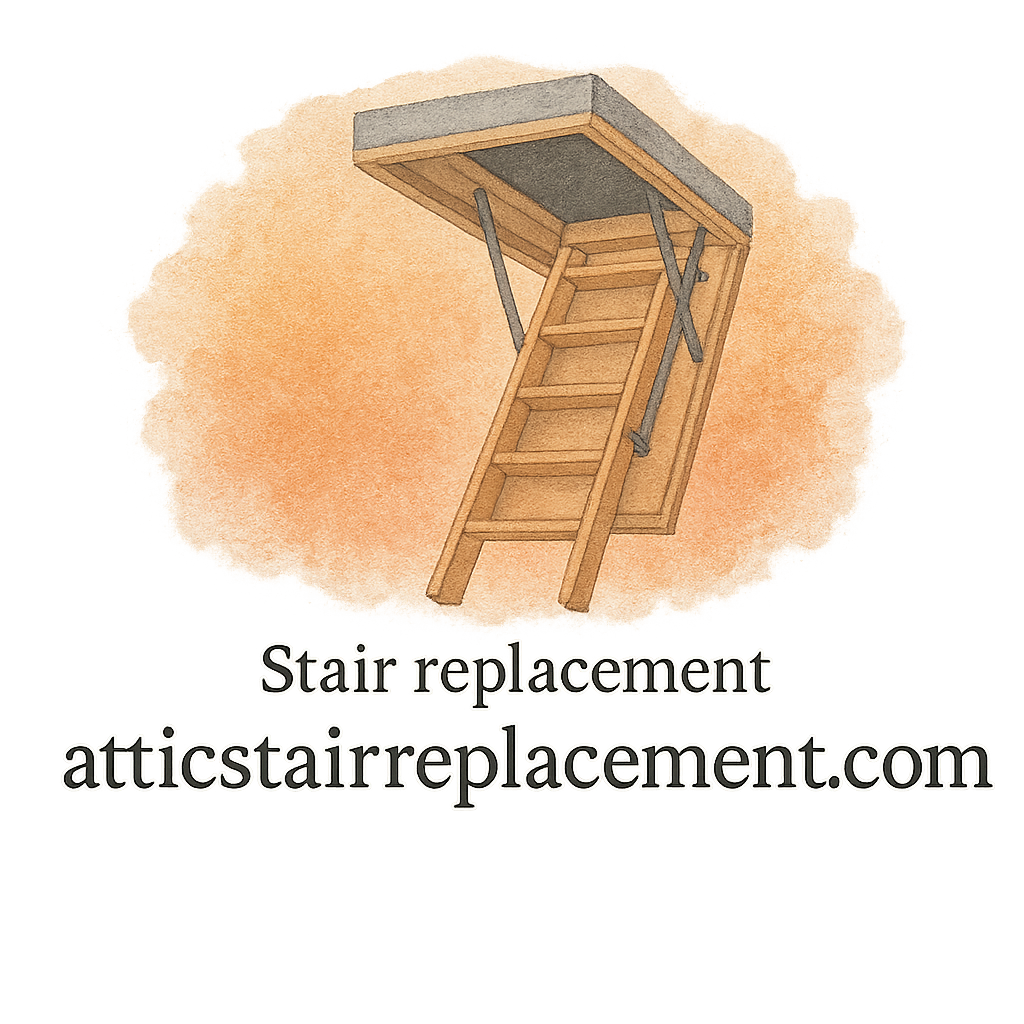If you’ve got an attic, chances are you rely on your attic stairs more often than you realize. But here’s the thing—those fold-down ladders don’t last forever. Just like any other part of your home, attic stairs can wear down, loosen up, and eventually become a safety hazard. The good news? Your attic stairs will usually give you warning signs before they fail completely. Today, we’re going to break down 6 signs your attic stair replacement needs repairs, along with practical advice to keep your home safe and accessible.
Why Attic Stairs Matter More Than You Think
Your attic stairs aren’t just another part of the house—they’re a gateway to hidden storage, seasonal decorations, and sometimes even HVAC systems. If they’re unstable, every trip upstairs could be a gamble. Worn-out attic stairs can lead to falls, injuries, or damage to your belongings. That’s why spotting issues early is crucial.
For more detailed attic stair care and improvement advice, check out Attic Stair Replacement expert advice.
The Importance of Regular Attic Stair Inspections
Think about it: you wouldn’t drive your car without an occasional tune-up, right? The same goes for attic stairs. A quick inspection every few months can reveal problems before they become major headaches. By catching issues like loose steps, cracks, or rust early, you save yourself money, stress, and potential accidents.
Sign #1: Creaking and Squeaking Sounds
Why Noisy Attic Stairs Shouldn’t Be Ignored
A little squeak might not seem like a big deal, but when your attic ladder sounds like a haunted house, it’s usually a sign of trouble. The noise comes from joints, hinges, or steps that have loosened over time. Left unchecked, those squeaks can turn into instability.
Quick Fixes vs. Long-Term Solutions
Sure, a bit of WD-40 might hush the noise, but it won’t fix the real issue if screws or fasteners are failing. Long-term solutions often mean tightening, replacing hardware, or even upgrading to a sturdier model.
Learn more in this DIY attic stair installation guide.
Sign #2: Loose or Wobbly Steps
Safety Hazards of Wobbly Attic Stairs
If your stairs feel shaky when you climb, that’s a major red flag. A single wobbly step can throw off your balance and send you tumbling.
DIY Tightening vs. Professional Help
You might be able to tighten a bolt or two, but if the whole unit sways, it’s time to call a contractor. Read more about when to bring in a professional contractor.
Sign #3: Visible Cracks in Wood or Metal
How Structural Damage Affects Stability
Cracks in the frame or ladder rungs weaken the entire structure. Wooden ladders can split under pressure, and metal ones can bend or fracture. Either way, it’s like climbing on borrowed time.
When It’s Time for a Full Replacement
Minor cracks can sometimes be patched, but if you see large splits or rusted-through sections, replacement is the safer move. Browse honest product reviews before buying a new model.

Sign #4: Difficulty Opening or Closing the Ladder
Causes of Stiff Hinges or Mechanisms
If your attic ladder feels like a wrestling match every time you pull it down, the hinges or springs may be bent, rusted, or misaligned.
Lubrication, Adjustments, or Replacement?
A little grease might help, but if the mechanism keeps jamming, it’s usually a sign of deeper damage. Sometimes replacement is cheaper than endless repairs.
Sign #5: Rust, Rot, or Corrosion
Moisture Damage and Its Long-Term Effects
Attics often have poor ventilation, making them prime spots for moisture buildup. Over time, that moisture can eat away at wood or metal. Rust weakens metal joints, and rot makes wood spongy and unreliable.
Preventing Future Deterioration
Install proper insulation and keep humidity under control. Learn more from this maintenance and repair guide.
Sign #6: Sagging Frame or Misalignment
Why a Misaligned Frame Spells Trouble
If the attic stair frame is sagging or the ladder doesn’t sit flush when closed, your unit is out of alignment. This makes it harder to use and stresses the frame every time it opens.
How to Correct Alignment Problems
Sometimes shimming or reinforcing the frame works, but in many cases, sagging frames point to deeper structural issues. In those cases, replacement is the best bet.
Hidden Costs of Ignoring Attic Stair Repairs
Delaying attic stair repairs might save you money upfront, but it almost always costs more later. Beyond the obvious safety risks, broken attic stairs can damage your ceiling, increase energy bills due to poor sealing, or even harm stored belongings. For more on budgeting and avoiding hidden costs, see this guide.
DIY vs. Hiring a Contractor: What’s Best?
When DIY is Safe and Affordable
Simple fixes like tightening screws or applying lubrication can usually be done on your own—especially if you enjoy a DIY home project.
Why Expert Repairs May Save You Money
But if you’re dealing with sagging frames, deep cracks, or major misalignments, calling an expert contractor will give you peace of mind. Professionals ensure job quality and lasting durability.
How to Extend the Life of Your Attic Stairs
Regular Maintenance Tips
- Tighten bolts every few months
- Apply lubricant to hinges
- Inspect for cracks or rust
- Keep the attic dry and ventilated
Preventing Common Mistakes
Don’t overload your attic stairs with heavy boxes. Stick to the manufacturer’s weight limit and follow proper use instructions. For more preventative tips, check out this home improvement guide.
Choosing the Right Replacement If Repairs Aren’t Enough
Budget-Friendly Options
If you’re replacing your attic stairs on a budget, lightweight aluminum or basic wooden ladders might be enough. Explore choices in the budget category.
Heavy-Duty and Durable Upgrades
Need something stronger? Consider heavy-duty and durable models that last longer and handle more weight.
Final Thoughts on Attic Stair Safety
Your attic stairs might not get daily attention, but they’re a crucial part of your home’s safety and convenience. Ignoring creaks, cracks, rust, or alignment issues is like playing with fire—you never know when the next step could be your last. Regular inspections, quick fixes, and timely replacements will save you stress, money, and maybe even a trip to the ER.
For step-by-step guidance and reliable information, visit Attic Stair Replacement and explore expert advice, tips, and guides.
FAQs
1. How often should I inspect my attic stairs?
At least every 6 months, or sooner if you notice any noise, wobbling, or difficulty opening.
2. Can I repair a cracked attic step, or do I need to replace the whole unit?
Small cracks can sometimes be reinforced, but larger ones usually mean replacement is the safest option.
3. What’s the average lifespan of attic stairs?
With proper care, attic stairs can last 10–15 years. Heavy use or poor maintenance shortens their lifespan.
4. How much does it cost to replace attic stairs?
Costs vary between $200–$800 depending on material, style, and installation method.
5. Are aluminum attic stairs better than wooden ones?
Aluminum ladders are lighter and resistant to rot, while wooden ladders are sturdy and budget-friendly. It depends on your needs.
6. What should I do if my attic stairs feel misaligned?
Check the frame and fasteners. If it’s beyond simple adjustments, consider calling a contractor.
7. Can I install attic stairs myself?
Yes, if you have carpentry skills and proper tools. For step-by-step help, see this DIY installation guide.


